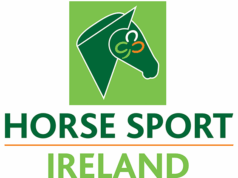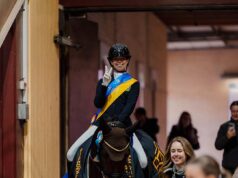By Alison F. Corbally and Alan G. Fahey
Graphics: © The authors
Sale prices at auction significantly impact the economic return of sport horse production. This study aimed to determine factors associated with auction sales prices of sport horses at four maturity stages: foals, juveniles, young horses, and older horses.
A total of 42,799 sales records from 2003 to 2022 were obtained from two Irish equine auction companies. A univariate regression model was used, and significant variables underwent multivariate analysis. Within each maturity category, factors associated with above-mean-priced horses differed from those associated with below-mean-priced horses.
Foals registered in a studbook, sired by high-performance stallions based abroad, and sold to overseas markets were associated with a positive price effect. Juvenile stallions and females that were sold at Cavan sales to Irish buyers were associated with a positive price effect. Four-year-old stallions in the overall and above-mean categories were associated with positive price effects in the young horse category. Young horses registered in a studbook, 165–172 cm tall, and sold in November to overseas clients were associated with positive price effects.
Horses not started under saddle were associated with positive price effects in overall and above-mean young horse groups. Positive price effects were also observed from older horses that had competed in training shows, were <10years and >165 cm tall and were sold abroad. Negative price effects were associated with horses over 10 years of age in this category. Analysing maturity and value segments gives breeders insights into price determinants, enabling them to optimise pricing strategies and improve profitability.
1. Introduction
The Thoroughbred sector produces and sells horses for race performance and breeding. Sport horses fulfil a wider variety of purposes. A British study has highlighted the challenge of defining a sport horse [1]. A comprehensive definition is outlined in the breeding goal of the largest sport horse studbook in Ireland.
The Irish Sport Horse aims “to produce a performance horse that is sound, athletic with good paces and suitable temperament and capable of winning at the highest international level in FEI disciplines” [2]. While no percentage breakdown is available from the studbook, anecdotally, few Irish breeders breed dressage horses; the primary breeding focus are the disciplines of showjumping and eventing.
Breeding and sales of sport horses are very important to the Irish economy, where the value of the overall industry in 2016 was €816 million, and auctions were reported to contribute €11 million [3]. That report also estimated that 24.16% and 75.86% of horses were sold at an auction and privately, respectively. Many horses are sold privately, private sales details are unavailable; therefore, this study exclusively utilises auction sales data.
CLICK HERE TO READ THE COMPLETE ARTICLE IN THE ONLINE EDITION OF BREEDING NEWS



